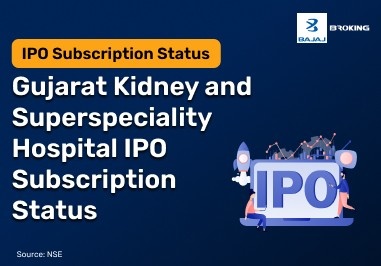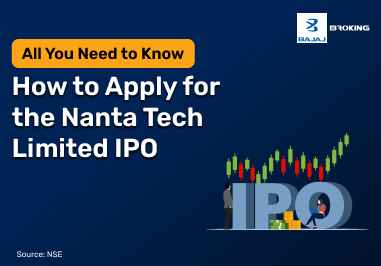What is a Dividend?
A dividend is a share of a company’s profits handed out to its shareholders. When a business does well, it can either reinvest that money or pass some of it to those who own its equity shares—think of it as a thank-you note for investing. Known as a "Dividend in Stock Market," it’s usually a percentage of earnings, paid per share. The National Stock Exchange (NSE) highlights that companies use dividends to attract investors who want income alongside share price growth. It’s a liability for the firm, but for the investor, it’s a potential perk—whether they invest in Mutual Fund schemes, explore ETF options, or commit to any other kind of financial instrument.
What is an Interim Dividend?
An interim dividend is a payment made to shareholders before a company’s annual general meeting (AGM) and final financial statements are out. Unlike the big year-end payout, this one happens mid-way, often alongside interim financial reports. Per SEBI rules, the Board of Directors declares it, but shareholders must give the green light. It’s typically smaller than the final dividend and might come monthly, quarterly, or half-yearly. For those given to tracking share prices, it’s a chance to see returns sooner, a key part of stock market basics.
How Do Interim Dividends Work?
- Declaration: The Board announces it based on interim profits or past earnings.
- Approval: Shareholders vote to approve, as per company law.
- Payment: Paid in cash or sometimes stock, before the AGM.
- Timing: Often quarterly or half-yearly, not tied to the full-year cycle.
Why Do Companies Pay Interim Dividends?
- Reward Shareholders: Keeps investors happy with regular payouts.
- Use Extra Cash: Puts surplus funds to work instead of sitting idle.
- Build Trust: Signals the company’s financial strength.
- Balance Finances: Manages profit-sharing alongside growth plans.
How is an Interim Dividend Funded?
Interim dividends usually come from retained earnings—profits saved from previous years—rather than the current year’s earnings, which aren’t fully tallied yet. This keeps companies from overreaching if annual results fall short. Here’s the breakdown:
- Retained Earnings: Past profits earmarked for such payouts.
- Prior Years’ Gains: A safe pool, not dependent on this year’s numbers.
- Other Options: Rarely, liquid assets or stock options might step in.
Calculation of Interim Dividend
Calculating an interim dividend is simple math.
The formula is:
Interim Dividend per Share = (Earnings × Dividend Payout Ratio) ÷ Number of Shares.
If a company pays both interim and final dividends in a year, the interim one’s kept smaller to play it safe. This ties into tools like the lumpsum Calculator, which lets you estimate what these payouts might mean for your returns over time—handy for planning with, say, an NPS Scheme or ETF.
Example of an Interim Dividend
Imagine Company X earns ₹15 lakh in a quarter, with a 20% payout ratio and 10 lakh shares outstanding.
Plug it in: (₹15,00,000 × 20%) ÷ 10,00,000 = ₹0.30 per share. So, if you own 100 shares, you’d get ₹30.
This example, aligned with BSE norms, shows how interim dividends deliver modest, steady returns—useful whether you’re into investing in Bonds or just simply brushing up on stock market basics.
Difference Between Interim and Final Dividend
Interim and Final dividends have the following difference which an investor should be aware of.
Aspect
| Interim Dividend
| Final Dividend
|
Timing
| Before year-end
| After year-end
|
Declaration
| Board, with approval
| Recommended at AGM
|
Rate
| Usually lower
| Typically higher
|
Revocation
| Can be undone with consent
| Locked in
|
Types of Dividends
- Final Dividend: Paid annually after results, showing full-year success.
- Interim Dividend: Mid-year payout, smaller, from retained earnings.
- Special Dividend: One-off bonus from extra profits.
Benefits of Interim Dividends for Shareholders
- Steady Income: Cash throughout the year, not just at the end.
- Trust Factor: Hints at a company’s solid footing.
- Flexibility: Funds to use or reinvest as you see fit.
- Positive Sign: Suggests good things for year-end results.
Taxability of Interim Dividends
In India, dividends—including interim ones—are taxable for shareholders, per the Income Tax Act. Since 2020, companies don’t pay Dividend Distribution Tax (DDT); instead, you declare it as “Income from Other Sources” and pay tax based on your slab.
Say you get ₹10,000 from an interim dividend in 2025—it’s added to your income and taxed accordingly.
Conclusion
Interim Dividends are a practical way for companies to share profits mid-year, giving shareholders a taste of returns without the wait. Whether you’re digging into stock market basics, eyeing an ETF, or learning how to use a lumpsum calculator properly, grasping this fairly basic concept sharpens your financial lens, in turn paving the way for smarter investment decisions.














